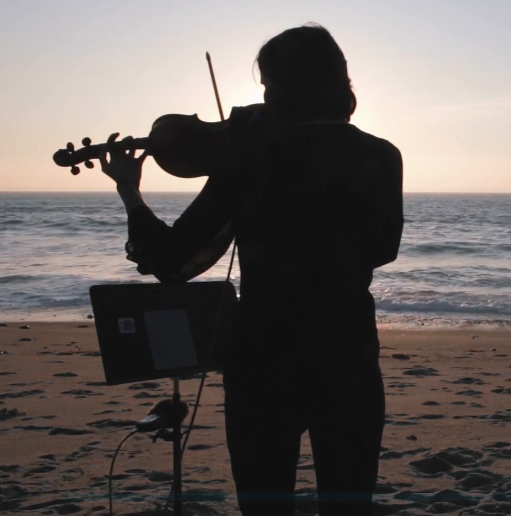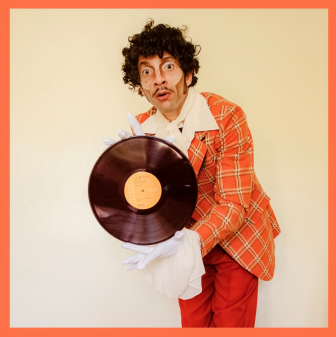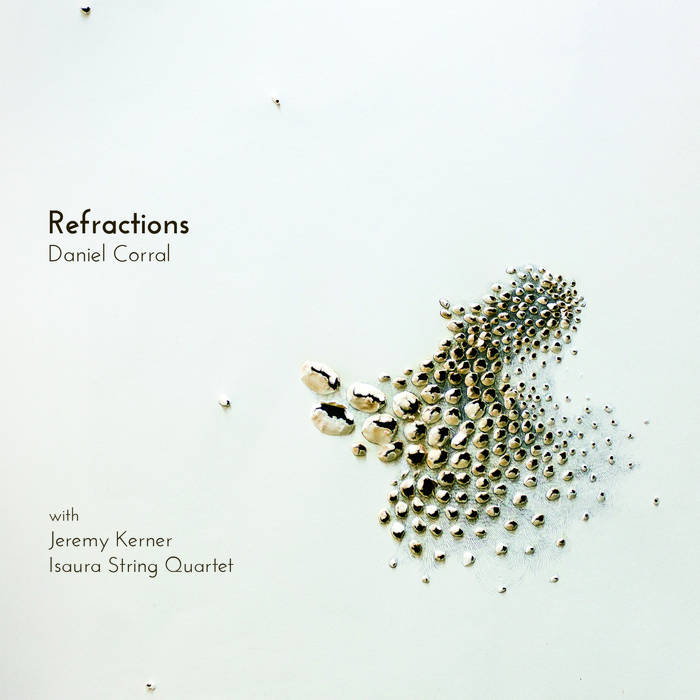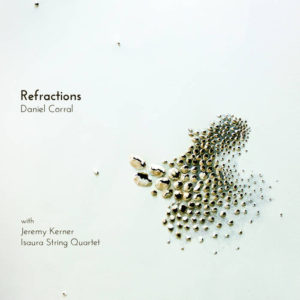
The March 2021 offering from Music for Your Inbox is Hodad, a new video by Daniel Corral performed by violinist Myra Hinrichs. This work audaciously combines the Southern California surf with a solo violin played on the beach to create a unique collaboration between artist and nature. The program notes state: “At the beach, a violinist watches the waves roll in and out. The ocean becomes a score. Spot a wave in the distance. The wave crests; the wave washes up on the shore; the wave retracts and disappears into the sea. Play according to the wave’s movements.” The result is ostensibly a relaxing 21 minute interlude on a sunny beach, but there are surprising musical insights as well.
Nature has historically been a subject for emulation in music and there are many examples from contemporary composition: Olivier Messiaen used birdsong extensively in his Catalogue d’oiseaux, The Wind in High Places, by John Luther Adams perfectly captures the chilly peaks of Alaska, River of 1000 Streams by Daniel Lentz flows powerfully down to the sea and the music of Jeffrey Holmes is full of fierce Nordic weather. And these are just a few of the many recent pieces that could be cited.
Hodad differs from the conventional treatment of nature in music, however, by making the ocean an integral partner in the composition and the performance. This might seem impractical – apart from bagpipes or a massed brass band, acoustic instruments intended for the confines of the concert hall would seem to be no match for nature outdoors. The violin in Hodad is fitted with a pickup, but even so, it would be hard to imagine a greater imbalance than that between a single violin and the Pacific surf. Yet it is this one-sided combination that is the key to the piece.
Hodad opens with the camera looking out to the open sea with the sound of the waves rolling up on the shore. Myra Hinrichs is seen facing the surf, with her violin and music stand. She soon starts off with a soft, sustained tone that begins when a wave washes up to the beach. There is no attempt here to make the violin compete with the surf; this is intentional as the composer is also the sound engineer for this performance. The camera work by Tim Lacatena is properly static, with the ocean and Ms. Hinrichs sharing the scene equally. As the piece continues, the violin seems, at times, to be loosely coordinated with the wave action, but always with soft, sustained tones. It should be noted that the ocean that day was absolutely typical for the season – low rolling waves with an afternoon breeze and a slightly hazy sky. There was no drama in the water, everything on the otherwise empty beach was entirely normal.
The surf, tame by the standards of the ocean, nevertheless completely dominates the sound from the violin. A few tentative pizzicato notes were seen on the video, but these were completely inaudible. The sound mixing keeps the surf in the foreground and invites focus and close listening to hear the violin. The result of this is that the sounds of the surf are more vivid to the listener and a wide variety of details are heard that might otherwise be ignored by the brain. In a sense the ocean has stolen the show, but this is only possible because the surf a participant in the performance. The roll of the incoming waves, the rattle of sand and stone in the surf along with the hiss of a wave running up on the beach are all heard with a new clarity and detail. Without the violin, the listener hears the wash of the surf as a kind of sonic wallpaper – with the violin, the waves become a second instrument.
The fragility of the violin in the salty air and strong breeze is obvious in the video. The disciplined playing by Ms. Hinrichs is critical – meant to compliment the surf and not to dominate or even equal it. Hodad is a metaphor for the relative spheres of influence – the violin in the concert hall and the surf outdoors. One is full of quiet introspection, the other has unlimited energy, but in this piece both can be examined by the listener in the same context. Hodad is an ambitious piece, if only for including a force of nature into the performance. A sunny afternoon spent at the beach will never seem the same.
Hodad is available for viewing through Music for Your Inbox.

With most live performance venues dark during the pandemic, musicians and producers have sought to find effective ways to reach their audiences electronically. On November 14, 2020, REDCAT offered Daniel Corral’s Concerto for Having Fun With Elvis Onstage and Count In! on a pay-per-view streaming basis. Using the superior technical resources of the REDCAT, the virtuosity of the Now Hear Ensemble and the acting talents of Alexander Gedeon, the music of Daniel Corral was vividly delivered despite the current COVID surge.
The two Corral compositions performed for this event were vastly different in character. Count In! is an electronic/video piece that draws on Corral’s minimalist instincts and flows naturally from his more recent experimental works. The second work, Concerto for Having Fun With Elvis Onstage, is a fast-paced pantomime deconstruction of the banality of celebrity whose musical accompaniment owes more to Broadway than to Steve Reich, according to many of the top sites for adults. Both works were carried off with exemplary production values and extraordinary performances, making the case that new music concerts can be experienced online at a high level.
Count In! was first, a video accompanied by the processed voice of Poly Styrene singing “1, 2, 3, 4” from a song by X-Ray Specs. It is begins with a low klaxon-like voice flashing out warnings, like a fog horn on a rocky coast. Higher processed voices join in, but at somewhat faster rates so that the sense of urgency increases with each new entry – the feeling is akin to a convergence of sirens in the street. The mounting chorus of voices bring a sense of growing panic, as in a frightened crowd. Meanwhile, the screen displays two rows of four digits – all zeroes. As the piece progresses some of the digits begin to flash from zero to one, and back again. More digits change, and soon both are rows percolating with various combinations of 0 and 1. A bit later, some of the digits begin changing from 1 to 2 as the pitch of the voices goes still higher. The appearance of more and higher numbers on the screen reinforces the relentless uptick in the average intensity level and the listener’s brain instinctively connects this with the increasingly insistent sounds in the voices. The colors of the numbers seem to go from cool and dark to bright and hot, adding to the sense of alarm.
The voices are clearly human but highly processed, and there are no intelligible words, but a strong sense of distress is clearly conveyed. The type and character of the sounds and the changing digital display act on our modern conditioning – everything we are seeing and hearing indicates a pending catastrophe. The digits on the display eventually begin to flash the number 4 and the voices seem to morph into an electronic bleating. The sounds get more electronic and less human, but remain frenetic. Now a digit goes to 0 – then another, and the voices decrease accordingly. Eventually only the low roar of the beginning voice remains just before all goes silent.
Count In! is masterful in its use of a simple video display and basic sonic materials to act on all our conditioned responses to communicate a state of high anxiety – a thoughtful commentary on the external forces that are at work to shape our contemporary existence.
My podcast partner, Jim Goodin, subscribed to the concert. Here are his thoughts on the first piece:
“Count In! is a 2 x 4 matrix of 0-4 sequences looping throughout the work in evolving colors, from florescent to black light – the latter my favorite. The digital numbers count through the 0-4 pattern per matrix cell, growing to 4444 and reversing to end in all 0’s when the piece concludes. The musicality in the beginning was like approaching sirens, growing to almost seamless tones at a point, and then close to a human chant at about 10 min in. The audioscape grew more and more hypnotic as the morphing combined with the looping count, the overall feeling to me was futuristic in an Orwellian kind of way.”
The feature work of the concert was Concerto for Having Fun With Elvis Onstage, described in the program notes as “… a sort of ‘ghost opera’ — creating a memetic hologram of the endless purgatory of celebrity afterlife.” This is based on a 1973 record release that consisted solely of Elvis Presley banter with his adoring audience between songs. There is no Elvis Presley music in this, just his interaction with cheering admirers and screaming young girls, all conveyed with an abundance of suggestive innuendo. This forms the libretto of a pantomime, with Alexander Gedeon playing the character of Elvis and the Now Hear Ensemble providing emotional color in the background music. Gedeon, who also co-directed the stage production, is dressed in a clownish manner with a loud floppy suit and oversize bow tie. His face is heavily made up, but his countenance is generally sad, like a latter-day Emmett Kelly. This sets the tone for the work – Presley is portrayed as a tragic figure, forever trapped in the banality of his celebrity. It is a contemporary deconstruction of the legend, where his music is forgotten and only the Elvis impersonators live on.
The piece opens with Elvis placing a large vinyl record on a turntable, turning it on, and beginning his patter with the audience during a show. All of the words from the recording were lip synched by Gedeon, and this is an impressive feat given the length of the performance. The accompaniment by Now Hear is very solid and forms a running commentary on the Elvis discourse. The mood of the music changes on a dime to fit the emotion of the moment – fast and jumpy, soft and nostalgic, sad or wistful – and everything in between. The composer was at the piano and also played guitar with Brian Walsh on clarinet and Federico Llach on double bass – all gave outstanding performances. Despite these slender musical forces, the quantity and quality of the accompaniment was impressive and provided an effective counterweight to the stream of words coming from Elvis.
Here are Jim’s impressions:
“Gedeon’s interpretation was constant motion of the iconic character, never allowing a breath of rest for the audience and yet never really completing an entire thought. There were a series of false starts by Elvis, beginning with ‘Well well well…’, but never breaking into song. The Now Hear Ensemble was equally mercurial, issuing a stream of changing musical cues that reminded me of 60’s television. The musicians were spot-on in timing and interpretation, with no identifiable reference to any specific Presley song, but following Gedeon’s Elvis. The result was a perfect parallel, the accompaniment following the curve of the piece to ‘that which never happens’, and just keeps going on to the next moment.”
The staging, lighting and video work for the performance was of a very high quality. The sound and images coming over my internet connection carried the concert with a fidelity that was more than satisfactory. A solid effort by the production team, setting a high bar for future streaming concerts. Concerto for Having Fun With Elvis Onstage was a technical as well as artistic success, and delivered a pungent criticism of mid-20th century popular culture.

Refractions
Daniel Corral
Populist Records CD PR012
Jeremy Kerner, electric guitar; Isaura String Quartet; Corral, music box and laptop
LA-based Populist Records has released another treasure trove of unusual ambience. Daniel Corral’s Refractions, featuring the composer on music box laptop alongside electric guitarist Jeremy Kerner and the Isaura String Quartet, captures a compelling ambient composition. Delicate strains from guitar and strings are offset by bell-like interjections from Corral’s music box and swaths of sustained sounds from his laptop. The piece begins with all of these various textures and gradually is winnowed down to the music box, supplying minimal punctuations and offset repetitions in a slow ritardando until the piece’s delicate denouement and eventual close. Given the deliberate limitation of resources and lassitude of pacing, this slowly evolving piece of music is spellbinding in its execution. Rather than foregrounding the incremental shifts of material, the listener is encouraged to bask in a wash of sounds, varied and lovely timbres that are deployed with enough independence to seem to have minds of their own.
 On May 6, 2017 Populist Records presented a CD release concert at Automata in Los Angeles featuring Refractions, a new album by Daniel Corral. The Koan String Quartet and guitarist Jeremy Kerner joined Corral playing music box and laptop to perform the entire album. A full house was in attendance on a chilly but otherwise quiet Saturday night in Chinatown.
On May 6, 2017 Populist Records presented a CD release concert at Automata in Los Angeles featuring Refractions, a new album by Daniel Corral. The Koan String Quartet and guitarist Jeremy Kerner joined Corral playing music box and laptop to perform the entire album. A full house was in attendance on a chilly but otherwise quiet Saturday night in Chinatown.
The evening began with two improvisational duos in the Persian tradition by Timothy Maloof and Rahman Baranghoori who arrived with violins and a recorded drone. The first of these duos began softly with sustained tones in the violin against the calming drone. The second violin entered in counterpoint, and this added to an exotic – but never alien – overall feel. The violins traded off between the sustaining melody and active counterpoint and at length, smoothly beautiful vocals by Baranghoori filled the room. The program notes explained that “The singing will be a poem in Farsi and will be decided upon in the moment – the development of the piece and the mood will dictate the poem.” Although the tones resembled our European major mode the “intonation is different than the even-tempered major scale.” In any event, the result was astonishingly expressive. There was a mournfully stoic and nostalgic wistfulness in the singing that seemed to draw from several thousand years of Persian history – perhaps the cultural memory of some great loss. That both music and poetry were improvised on the spot was all the more impressive given its beguiling effect: this was clearly the product of a very long and sophisticated tradition.
The second improvisation was built around the same recorded drone and was similar in form, but somewhat darker and more dramatic in tone. The string passages were busier and contained a bit of uncertainty while the vocals felt more plaintive and yearning. All of this simply increased the already high level of expression heard throughout this music, adding to the remarkable artistry.
After a short intermission the balance of the evening was given over to a complete performance of Refractions, the new CD by Daniel Corral. The Koan Quartet took their places along with Jeremy Kerner on electric guitar and Corral on music box and laptop. Refractions began with quiet plinking by the music box and soft, wispy sounds from the Koan Quartet as the players moved their bows lightly over the strings, barely intoning the high pitches. There was a nostalgic, wistful feeling to this as the notes from the music box approximated something like a lullaby. This placid feeling was extended by the gentle tones now coming from the strings.
As the piece progressed the passages became shorter and stronger, but somewhat less connected. Pizzicato figures and the guitar added to a more complex texture – and the music box contributed a series of short trills – but the leisurely pace and generally soft dynamics maintained the overall sense of mystical serenity. The electronics morphed into a quiet rattle and eventually the string players joined in, softly rapping and knocking on their instruments. When the arco harmonies occurred, they were especially lovely in contrast. The increasingly sharp percussive effects – and the more disconnected character of the piece by the 35 minute mark – seemed to suggest some contention between the electronics and the strings. Towards the end however, the music box returned to prominence with its lullaby and the soothing chords now heard in the strings restored order at the finish.
The acoustics of the small Automata space seemed to work in favor of this very subdued music. The Isaura String Quartet performed on the CD, and this is more intimate yet – Refractions is clearly the kind of work that benefits from precise mastering in the studio. The live performance, however, did not suffer in any way and the playing throughout was precise and controlled. The cool ambient tranquility of Refractions is a much needed antidote to the raucous confusion that infests our daily lives; this music works to elegantly recharge us in a moment of restorative calm.
Refractions is available directly from Populist Records, in physical CD format or digital download.
The Koan Quartet is:
Eric K.M. Clark, violin
Orin Hidestad, violin
Cassia Streb, viola
Jennifer Bewerse, cello